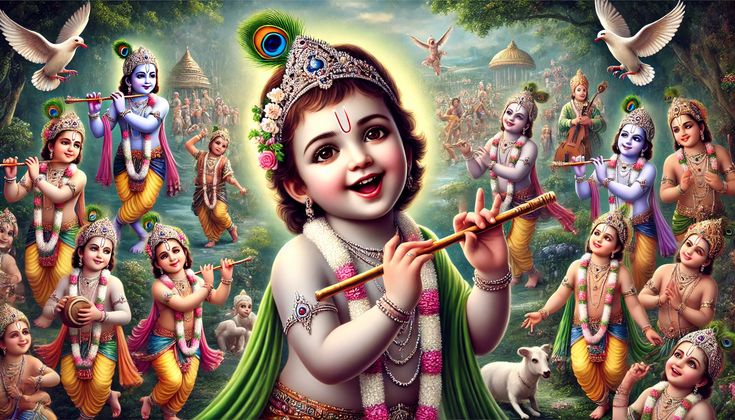
Divine Beauty: The Ritual and Significance of Kanha Ji Shringar
Share
In the heart of every Krishna devotee lies a deep love for the ritual of Kanha Ji Shringar—the devotional dressing and adorning of Lord Krishna's idol. This beautiful practice is more than just a daily routine; it is an expression of pure love, bhakti (devotion), and reverence.
What is Kanha Ji Shringar?
Shringar literally means adornment or decoration. In the context of Kanha Ji (another affectionate name for Lord Krishna), it refers to dressing the idol with exquisite clothes, jewelry, fragrances, flowers, and accessories. Devotees consider it a sacred duty to make the Lord look his best each day, just as one would lovingly care for a beloved child or royal deity.
This ritual is common in many homes and temples across India, particularly in places with Thakur Ji (another name for Krishna) worship such as Vrindavan, Nathdwara, and Barsana.
The Elements of Shringar
Every detail in the Kanha Ji Shringar has symbolic meaning and spiritual significance:
- Vastra (Clothes): Kanha Ji is dressed in vibrant, colorful outfits—often in silk or cotton, depending on the season. During summer, he's adorned in light fabrics, while in winter, wool or velvet is used to keep the Lord “warm.” The colors are chosen based on the day of the week or special festivals.
- Mukut (Crown): A beautifully crafted crown, often decorated with peacock feathers, is placed on Kanha Ji’s head. The feather represents Krishna’s playful and loving nature.
- Jewelry: Tiny yet intricate jewelry sets including necklaces, bangles, anklets, earrings, and waistbands are used to enhance the divine beauty of the idol.
- Flowers & Fragrance: Fresh flowers, garlands, and natural perfumes like chandan (sandalwood) or attar (natural oils) are applied to please the senses of the divine.
- Tilak & Chandan: A tilak made from sandalwood or sacred ash is drawn on the Lord’s forehead, marking his spiritual purity and divine energy.
- Footwear & Accessories: Kanha Ji’s look is completed with small mojris (traditional footwear), a flute in his hand, and sometimes even a small umbrella or hand fan in summer months.
Timing & Ritual
Shringar is usually performed in the morning as part of the Mangala Aarti and later again in the evening. Each dressing is different and is often based on the leela (divine play) or theme for the day, festival, or mood of the devotee.
Some devotees even maintain multiple outfits for every day of the week, ensuring that Kanha Ji is never dressed the same way twice.
Spiritual Meaning Behind Shringar
While the practice may seem external, it is deeply internal. Shringar reflects a devotee’s seva bhav—the feeling of loving service. The act of caring for the Lord with such detail draws the heart closer to the divine. It’s a meditative practice, where each action—folding the cloth, fixing the crown, arranging the jewelry—is done with love and mindfulness.
In fact, many believe that when one dresses Kanha Ji with a clean heart and devotion, the Lord smiles within and showers his blessings in return.
Festivals & Special Shringar
During festivals like Janmashtami, Radhashtami, Holi, Diwali, and Govardhan Puja, special Shringar is done with elaborate themes—royal, floral, or even playful (like dressing him as a cowherd, prince, or Radha).
Devotees also enjoy preparing seasonal Shringar—like a Phool Bangla (flower palace) during summer or warm woolen attire in winter. In some traditions, Shringar even includes miniature beds, swings, and thrones made for Kanha Ji.
A Personal Connection
For many, Kanha Ji is not just a deity; he is family. People talk to him, share their joys and sorrows, feed him lovingly, and dress him as they would their own child. This intimate bond is what makes Kanha Ji Shringar so unique and heartwarming.



